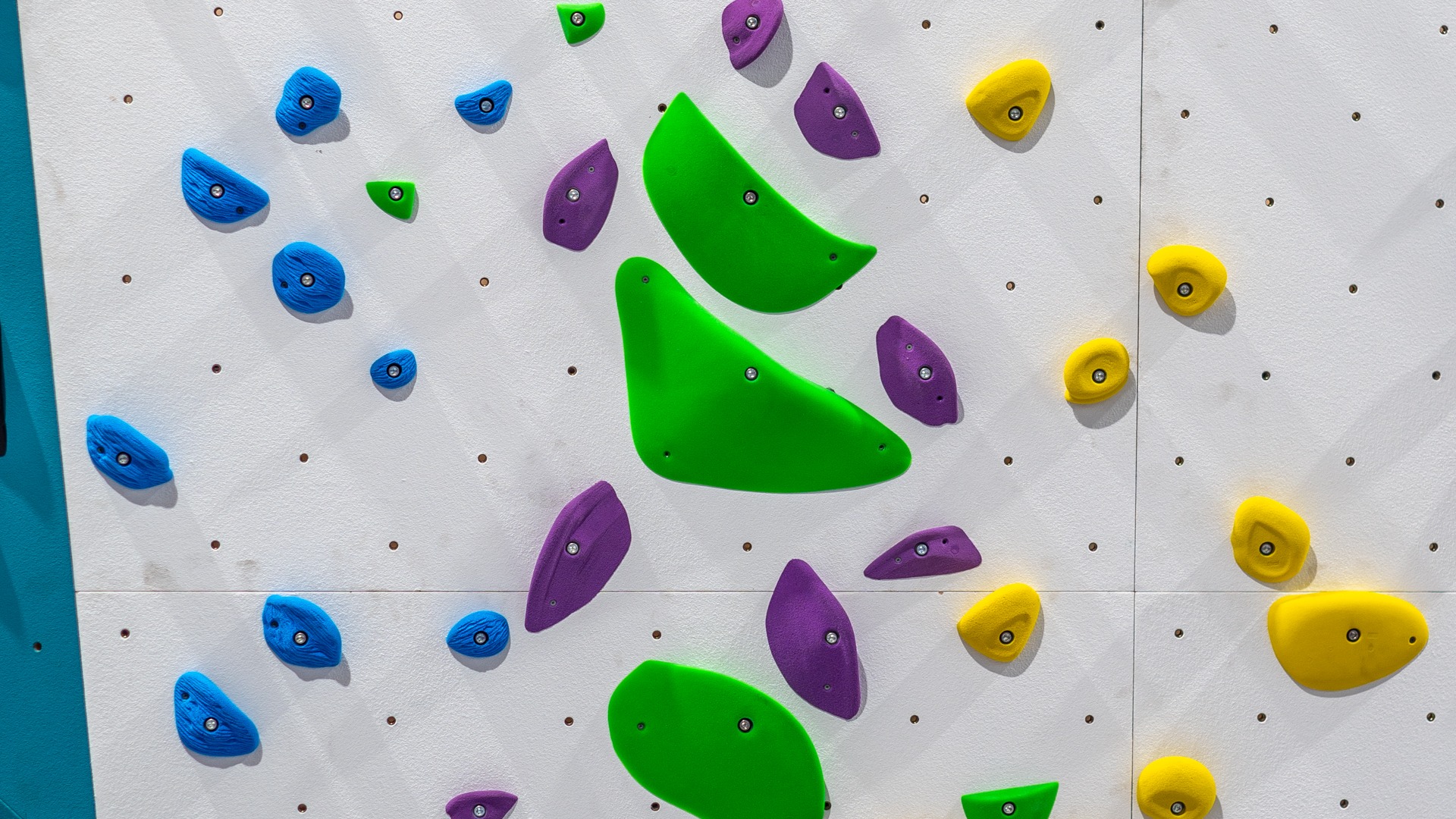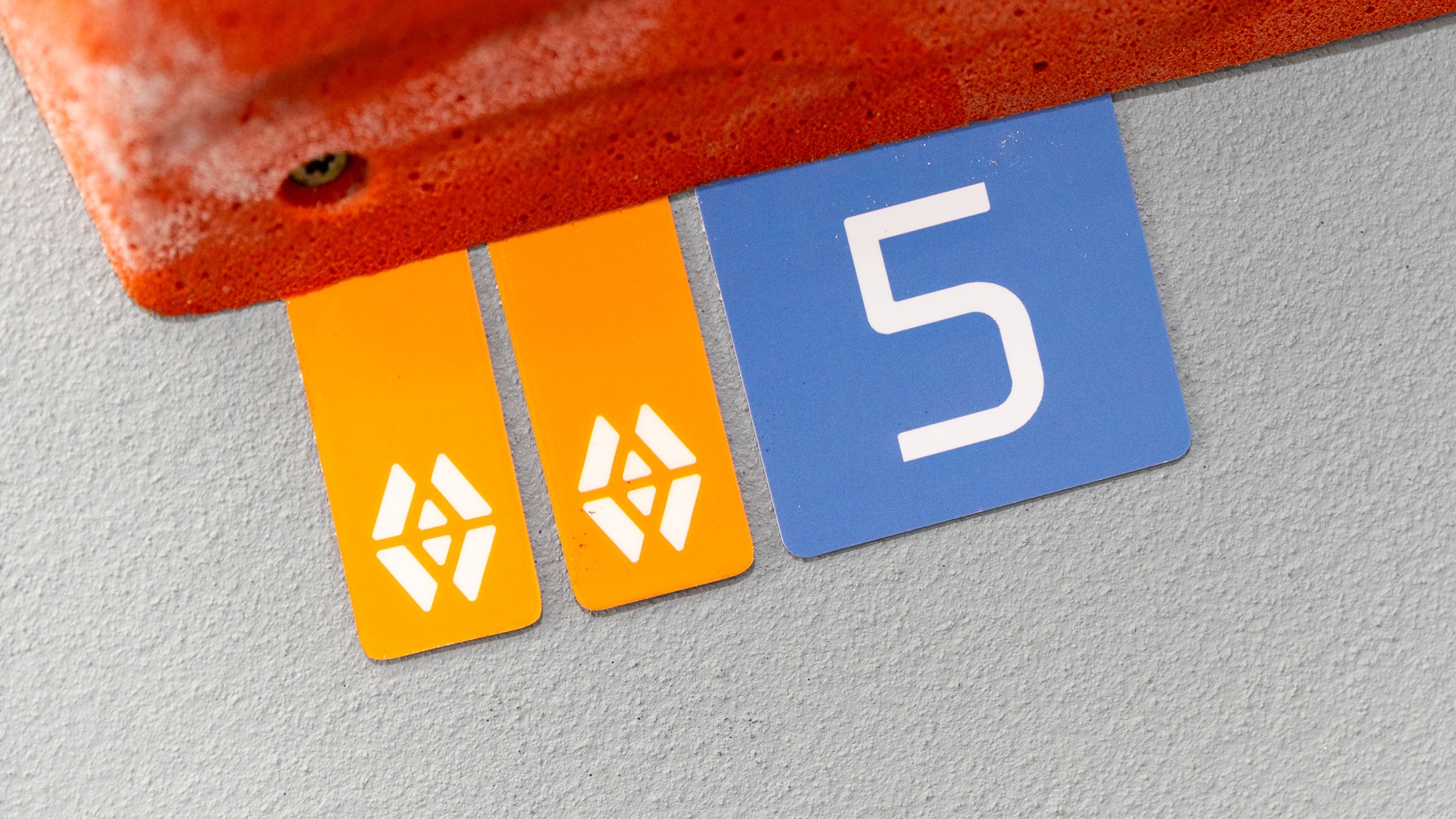In the business of commercial bouldering gyms around the world, the diversity in grading systems is both vast and influential. Some facilities align with grading systems that mirror traditional outdoor climbing, encompassing scales like the V-grades, Japanese scale, and Font scales. In contrast, others opt for a more contemporary approach, employing a coloured hold or tag scale system to denote varying difficulty ranges or levels. For new gym owners, the choice between these grading methodologies holds substantial weight, as it reverberates through critical aspects such as hold procurement, customer appeal, and even nuances of route-setting. This article delves into the decision-making process, focusing specifically on coloured hold versus tags. We asked climbing gym owners & managers across Australia what pros and cons they’ve found for each method.
“It is interesting the whole grading debate, I have had discussions with Gym owners & setters across Australia about grading and route setter restrictions.
I think all head setters/Gym owners feel a little different.“ – Ian Gilmartin – Core Climbing, Carrara & Cornubia

Coloured Hold System
In this approach, the holds’ colours signify specific grades within the grading scale, ensuring that holds of the same colour throughout the gym correspond to the same grade.
“I much prefer the colour holds, as a consumer whenever I’m personally in a gym with grading tags its confusing as hell!” – Jad Lee – Boulder Heads, Baringa
Advantages:
- Beginner-Friendly: The coloured holds system is highly intuitive for newcomers, providing a visual and easily understandable representation of difficulty levels.
- Setter’s Advantage: Mapping out the gym becomes more straightforward, ensuring holds align with their designated grades.
- Future Hold Orders: By setting within these grading boundaries, setters are more likely to identify what type of holds are needed in a specific colour.
“By setting the climbing difficulty to the colour of holds, we feel this makes climbing the most accessible to newcomers. Our approach has been to grow the sport as a whole and we feel that a lot of gyms have adopted this system for similar reasons.” – Bek Parer – ICP Boulder Hall, Fortitude Valley
Disadvantages:
- Space Constraints: The need for additional hold storage within the climbing facility arises.
- Setter Constraints: Setters might face limitations in variation within each colour grade, impacting creativity and diversity in routes.
- Higher Cost Overtime: Implementing this system may incur a higher cost when factoring future holds purchases, as gyms would be required to purchase new holds in each colour grade to increase variety.

Tag Grading Systems
A Tagged grading system, often referred to as a tape system, is also widely employed by many gyms around the world. In this system, the tag or tape attached to the start hold(s) indicates the difficulty level of the boulder problem. Tags can be coloured or labelled to indicate a specified difficulty. Typically, all holds within a specific problem share the same color. However, it’s important to note that two different climbs with the same colour holds within the gym may not necessarily reflect the same level of difficulty.
“We started with coloured holds. Then a few years ago we changed to tags. Clientele have preferred it, they get to climb all different types of holds instead of expecting the same hold set week in and week out.” – Chris Chin, Adrenaline Vault, Belmont & Cockburn
Advantages:
-
Setting Variety:
The tagged system allows for increased variety for setters, as any colored hold can be used for any grade, promoting a diverse climbing experience.
-
Cost Efficiency overtime: Although the initial cost for new builds would be the same as the coloured hold system, gym owners may find the tag system provides more variety and thus saves money overtime when purchasing new holds.
- Constant Variation: Climbers experience a continual flow of new challenges and holds as different coloured holds rotate through the grades over time.
“When ordering holds, I can pick any colour (to a certain extent) for sets. I can order a greater variety of colours too. I don’t have to worry about difficulty of the sets making sure they fit within a certain range.” – Chris Chin, Adrenaline Vault, Belmont & Cockburn
Disadvantages:
- Learning Curve: Explaining the system to beginners can be challenging, requiring extra resources and training to ensure climbers use the correct holds.
- Set Planning: Considerably more difficult to keep track on available holds for setters.
- Grade Blurring: As setters have a greater variation with the holds they can use, it is common to see the boundaries between grades to get a little blurry. Sometimes aggressive holds are used on easier climbs and vice versa. Greater setting experience will be required as, changing grade variations can lead to lower member satiation.
“Buying holds does require a larger spend and stock for setting the number system over the colour, you need all difficulty of holds in all grades, however, life of a hold is increased because the lower level climbs get much more traffic and the higher grades traditionally last longer, the rotating means all hold life is more similar.” – Ian Gilmartin – Core Climbing, Carrara & Cornubia
The choice between colored holds and tagging systems for grading bouldering gyms does not have a one-size-fits-all answer. Each system comes with its own set of advantages and disadvantages. It’s crucial to emphasize that the scenarios discussed are generalizations, and the suitability of each approach may vary based on the specific needs and characteristics of individual gyms. The decision to adopt a specific grading system should ideally be made before opening a new gym, as changing it later can lead to increased hold costs and potential confusion among regular members. Ultimately, the key lies in aligning the chosen system with the unique dynamics and aspirations of your bouldering gym.
“Generally speaking, whichever grading system you use, clients will usually adapt to it as long as they enjoy the facilities, service and route setting provided.” Johann Kwan – OnSight Bouldering, Glen Waverley
At ICP Boulder Hall & Showroom, we opted for the Coloured Holds System, prioritizing beginner-friendliness, the aesthetic of our boulder area and leveraging our hold selection. If you’re contemplating opening a new gym or wish to discuss this topic further, feel free to reach out to us.


